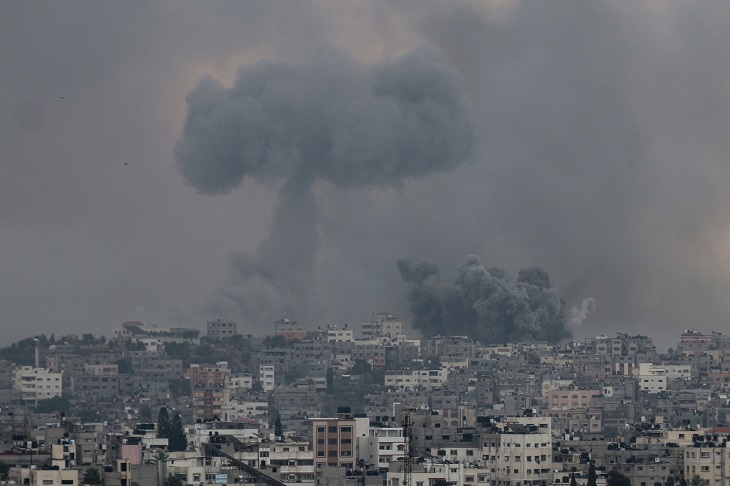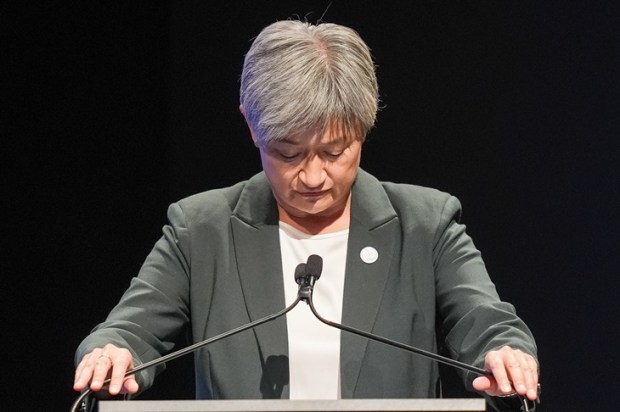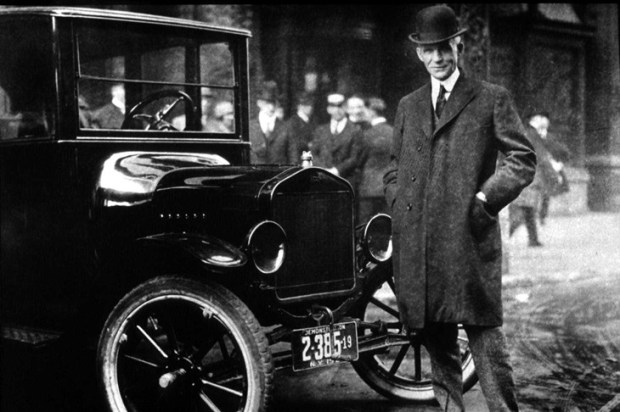In December 1987, an uprising that became known as the Palestinian intifada began in the West Bank and Gaza Strip. As the rioting went on, the very distinguished former Israeli Foreign Minister Abba Eban, explained that all human rights which we often take for granted:
‘Are beyond the reach of 650,000 Palestinian Arabs. There is dejection, bitterness and despair crowded into a small squalid enclave of gloom. It must be a long time since anyone smiled in Gaza.’
His solution?
‘The ending of Israeli rule over 1,300,000 Palestinians in the West Bank and Gaza, most of whom would then be citizens of a joint Jordanian-Palestinian state, living side by side with Israel.’
George C Marshall, the American general who led the liberation of Western Europe in the second world war, and then as Secretary of State spearheaded its reconstruction afterwards with the plan that bore his name (for which he won the Nobel Peace Prize in 1953) was vehemently opposed to the US recognition of the state of Israel in 1948 by President Harry Truman. In Marshall’s view, such recognition would only solve one problem (that of a state for the Jews) but create a new problem – that for the Palestinian Arabs, following which war would break out. As history tells us, war did indeed break out in 1948, as it did again in 1956, then in 1967, in 1973, in 1982, and since then at repeated intervals until the present day.
How many readers remember the massacre at the 1972 Munich Olympics, and the numerous plane hijackings in the 1970s and 1980s?
This land, which was supposed to be one ‘where milk and honey flow’, has more often than not since AD70 seen blood flow, as Jesus Christ Himself predicted: ‘Seest thou these great buildings? There shall not be left one stone upon another, that shall not be thrown down.’ (St Mark 13: 2).
For 2,000 years since that time, the Middle East has been possibly the greatest source of conflict.
The Crusades to protect the Holy Places from the Saracens took place over hundreds of years in the Middle Ages.
The Ottoman Turks ruled Palestine for 400 years from the 1600s, until the end of the first world war, when the British were given a mandate to rule Palestine, and Jewish migration to the area increased, mainly from Europe. Uprisings by Jews and Arabs occurred repeatedly, against each other and then against the British, who found themselves prisoners as much as rulers. Attacked by both sides, the British were thus wanting to end the mandate, and in 1937 established the Peel Commission to find a solution for Palestine. The Commission reported that between Arabs and Jews, there was ‘no common ground between them. They differ in religion and language. Their cultural and social life, and their ways of thought and conduct are as incompatible as their national aspirations. These last are the greatest bar to peace’.
The Peel Commission thus proposed that the land should be partitioned between an Arab and Jewish state. This partition was accepted by the Jews but rejected by the Arabs. For the former, something was better than nothing. For the latter, it was all or nothing.
The Peel Plan proved to be the master partition plan on which all those that followed were based or compared to. Each plan has included the West Bank and Gaza Strip in a Palestinian state, as did the United Nations 1947 partition plan (the bombing of the King David Hotel in July 1946 by the Stern Gang in which 88 people were killed was the last straw for the British), under which the UN divided the hitherto British ruled territory into three areas: a Jewish state, a Palestinian state and an international area around Jerusalem. Once again, the plan was rejected by the Arabs, most notably by the Mufti of Jerusalem. Since then, history has been repeating itself.
I remember the great hope that arose with that handshake on the White House lawn in September 1993 between Yitzhak Rabin and Yasser Arafat (I was in year 12 at the time, readying for final exams, but our history teacher made sure we all watched the ceremony which was broadcast live from Washington DC), and the signing of the Oslo Accords in the following year, only for those hopes to be dashed in the 30 years since. In this writer’s view, the assassination of Rabin in November 1995 by a Jewish extremist was a serious blow to the peace process. This was the man who said on the White House lawn: ‘We say to you today, the Palestinians, enough of blood and tears. Enough.’
However, the inability of one side to accept compromise often means that side will end up with nothing at all. Abba Eban was Israeli Foreign Minister at the time of the Yom Kippur War in 1973. Following the conflict, the Geneva Conference was convened in an attempt to negotiate a solution to the Arab-Israeli conflict, however, no agreement was reached (although the groundwork was laid for the Camp David Accords between Israel and Egypt, signed some five years later).
Following the conference, Eban made the oft-quoted comment that Arabs ‘never miss an opportunity to miss an opportunity’ (i.e., for peace). And so it has proved.
Other than murderous, bloodthirsty, crazed fanatics, I doubt that anyone is smiling in Gaza now.
Got something to add? Join the discussion and comment below.
Get 10 issues for just $10
Subscribe to The Spectator Australia today for the next 10 magazine issues, plus full online access, for just $10.


























Comments
Don't miss out
Join the conversation with other Spectator Australia readers. Subscribe to leave a comment.
SUBSCRIBEAlready a subscriber? Log in